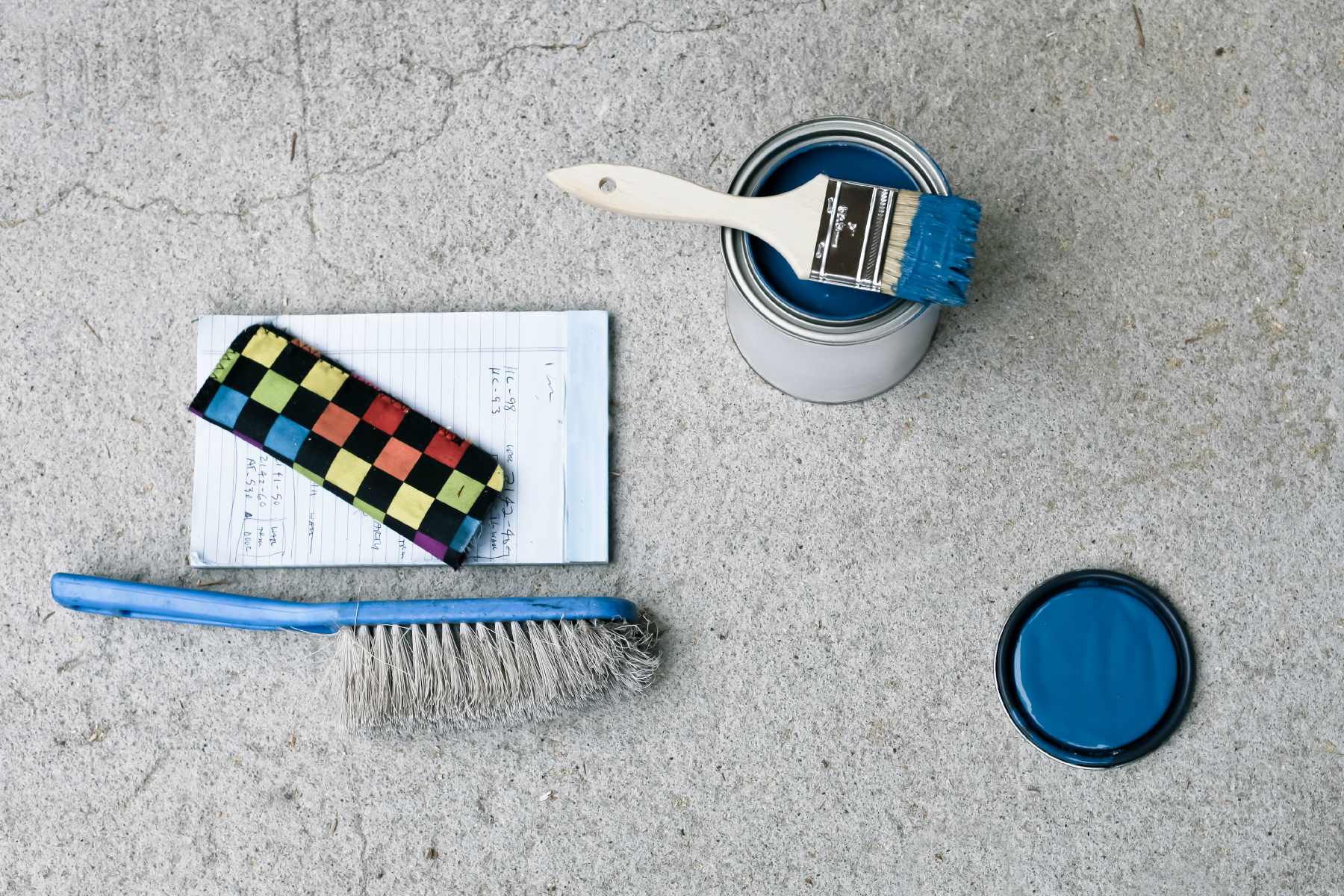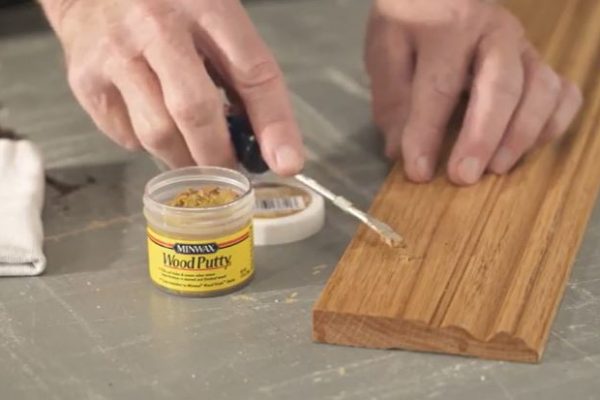Home>Renovation & DIY>DIY Projects & Ideas>What Wood Is Best For DIY Projects


DIY Projects & Ideas
What Wood Is Best For DIY Projects
Modified: August 28, 2024
Discover the best wood for your DIY projects and get inspired with creative ideas and tips for your next woodworking endeavor. Explore the top choices for your DIY projects and ideas.
(Many of the links in this article redirect to a specific reviewed product. Your purchase of these products through affiliate links helps to generate commission for Storables.com, at no extra cost. Learn more)
Introduction
Embarking on a do-it-yourself (DIY) project is an exciting endeavor, allowing you to unleash your creativity and craftsmanship. Whether you’re constructing a piece of furniture, revamping your living space, or crafting a unique decor item, the choice of wood is a crucial decision that significantly impacts the outcome of your project. Understanding the characteristics of different wood types and their suitability for various applications is essential for ensuring the success and longevity of your DIY creations.
In this comprehensive guide, we will explore the best wood options for DIY projects, ranging from softwoods to hardwoods and even reclaimed wood. By delving into the unique features and benefits of each wood type, you will gain valuable insights that will enable you to make informed decisions when selecting the perfect wood for your next DIY endeavor.
So, let’s embark on this enlightening journey through the realm of wood, where we’ll uncover the secrets to choosing the most suitable wood for your DIY projects.
Key Takeaways:
- Softwoods like pine and cedar are great for DIY projects due to their affordability and ease of workability, making them ideal for crafting furniture, shelves, and outdoor items like garden furniture and planter boxes.
- Hardwoods such as oak, maple, cherry, and walnut offer durability, rich colors, and intricate grain patterns, making them perfect for creating long-lasting furniture, flooring, and decorative accents with timeless elegance.
Types of Wood for DIY Projects
When it comes to DIY projects, the type of wood you choose plays a pivotal role in determining the aesthetic appeal, durability, and overall quality of the finished product. There are various wood options available, each with its unique characteristics and suitability for different applications. Broadly speaking, wood can be classified into two main categories: softwood and hardwood. Additionally, reclaimed wood presents an eco-friendly and distinctive option for DIY enthusiasts. Let’s delve into each of these wood types to gain a deeper understanding of their attributes and potential uses in DIY projects.
Softwood Options
Softwoods, derived from coniferous trees, are known for their versatility and affordability, making them a popular choice for a wide range of DIY projects. One of the most prevalent softwoods is pine, prized for its light color, straight grain, and ease of manipulation. Its relatively soft nature allows for effortless cutting and shaping, making it ideal for crafting furniture, shelves, and decorative accents.
Cedar, another softwood variety, boasts natural resistance to decay and insects, making it an excellent choice for outdoor projects such as garden furniture, planter boxes, and pergolas. Its aromatic scent adds an extra dimension to the appeal of cedar-made items. Meanwhile, fir and spruce are valued for their strength and stability, rendering them suitable for structural components like framing and support beams.
Softwoods are also favored for their ability to readily absorb stains and finishes, allowing for a spectrum of color options to match your desired aesthetic. Whether you’re aiming for a natural, rustic look or a polished, contemporary finish, softwoods can be customized to suit your preferences.
While softwoods may be more susceptible to dents and scratches compared to hardwoods, their affordability and ease of workability make them an attractive choice for DIY enthusiasts seeking to hone their woodworking skills while creating beautiful and functional pieces.
Hardwood Options
Hardwoods, originating from deciduous trees, are renowned for their durability, rich colors, and intricate grain patterns, making them prized materials for an array of DIY projects. Oak, a prominent hardwood, is celebrated for its strength and prominent grain, lending itself to furniture making, flooring, and cabinetry. Its resilience to wear and tear ensures that items crafted from oak will stand the test of time, making it a valuable investment for DIY enthusiasts.
Maple, with its fine, uniform texture and light hue, is favored for its versatility in both structural and decorative applications. It is often utilized in creating kitchen utensils, cutting boards, and musical instruments due to its durability and aesthetic appeal. Cherry wood, on the other hand, boasts a deep, rich color that darkens over time, adding a touch of elegance to furniture and interior accents.
Walnut, prized for its lustrous, chocolate-brown hue and striking grain patterns, is a popular choice for crafting luxurious furniture pieces and decorative items. Its natural beauty and resilience make it an excellent option for DIY projects that demand a touch of sophistication and timeless allure.
One of the key advantages of hardwoods is their exceptional durability and resistance to wear, making them suitable for high-traffic areas and items that require long-term reliability. While hardwoods may be relatively more challenging to work with due to their density, the stunning results they yield justify the effort and skill required to manipulate them into exquisite creations.
When choosing wood for DIY projects, consider the durability and workability of the wood. Hardwoods like oak and maple are great for furniture, while softwoods like pine are good for smaller projects.
Reclaimed Wood
Embracing the concept of sustainability and uniqueness, reclaimed wood has gained widespread popularity in the realm of DIY projects. This environmentally conscious choice involves repurposing wood from old structures, such as barns, warehouses, and demolished buildings, to breathe new life into these weathered and storied materials.
Reclaimed wood exudes character and history, bearing the marks of its previous life in the form of nail holes, weathering, and patina, which add a distinct charm to any project. Each piece of reclaimed wood tells a tale of bygone eras, infusing a sense of nostalgia and authenticity into the items crafted from it. Whether used for creating accent walls, rustic furniture, or decorative elements, reclaimed wood lends a unique and captivating allure to DIY projects.
Furthermore, by utilizing reclaimed wood, DIY enthusiasts contribute to sustainable practices by reducing the demand for newly harvested timber and minimizing the environmental impact associated with deforestation. This eco-friendly approach aligns with the ethos of responsible craftsmanship and adds a meaningful narrative to the creations born from reclaimed wood.
While working with reclaimed wood may present challenges such as irregular shapes and the need for meticulous preparation to remove debris and imperfections, the end result is a one-of-a-kind masterpiece that embodies history, sustainability, and creativity.
Read more: What DIY Projects For A Glue Gun
Choosing the Best Wood for Your Project
As you embark on your DIY journey, the task of selecting the best wood for your project is pivotal to the success and satisfaction of the final outcome. Several factors should be considered to ensure that the chosen wood aligns with the specific requirements and vision of your endeavor.
First and foremost, assess the intended application of the wood. Are you crafting a piece of furniture, constructing a structural element, or embellishing your living space with decorative accents? Understanding the purpose of the wood will guide you in determining the necessary characteristics such as strength, durability, and aesthetic appeal.
Consider the environmental conditions to which the finished product will be exposed. For outdoor projects, opt for wood species with natural resistance to decay and insects, such as cedar or pressure-treated lumber. Conversely, for indoor furniture or decor, prioritize woods renowned for their visual appeal and ability to complement the existing aesthetic of your space.
Budgetary constraints play a significant role in the selection process. Softwoods are generally more affordable than hardwoods, making them an economical choice for beginners or projects with budget limitations. However, if your project demands the unparalleled durability and timeless beauty of hardwoods, consider it an investment in a long-lasting and exquisite creation.
Furthermore, take into account your woodworking skills and the tools at your disposal. While softwoods are generally easier to work with due to their softer nature, hardwoods may require more advanced tools and expertise to manipulate effectively. Assess your comfort level and willingness to take on the challenges associated with different wood types.
Lastly, let your creativity and personal preferences guide your decision. Each wood type possesses unique characteristics that can contribute to the overall aesthetic and ambiance of your project. Whether you opt for the warmth of reclaimed wood, the versatility of softwoods, or the timeless elegance of hardwoods, the chosen wood should resonate with your creative vision and aspirations for the finished piece.
Conclusion
Embarking on a DIY project is a deeply rewarding experience that allows you to infuse your personality and craftsmanship into tangible creations. The choice of wood serves as a cornerstone in the realization of your vision, impacting the aesthetics, durability, and character of your project. By exploring the diverse options of softwoods, hardwoods, and reclaimed wood, you gain access to a rich tapestry of materials, each with its unique story and potential.
Softwoods, with their affordability and ease of workability, offer a canvas for honing your woodworking skills while creating functional and visually appealing items. Hardwoods, renowned for their resilience and intricate beauty, elevate your projects with timeless elegance and enduring quality. Reclaimed wood, with its sustainability and inherent charm, adds a touch of history and eco-consciousness to your creations.
As you navigate the realm of wood for DIY projects, consider the specific needs and aspirations of your endeavor. Whether you seek structural integrity, visual allure, or a sustainable narrative, the choice of wood should align with your goals and resonate with your creative spirit. Embrace the journey of selecting the perfect wood, allowing its natural beauty and inherent characteristics to enrich your DIY projects with authenticity and allure.
In the realm of DIY, the possibilities are as boundless as your imagination, and the right choice of wood serves as the foundation for bringing your ideas to life. So, let the grain, texture, and hues of wood inspire your next creation, and may your DIY ventures be filled with the joy of craftsmanship and the pride of transforming raw materials into cherished works of art.
Frequently Asked Questions about What Wood Is Best For DIY Projects
Was this page helpful?
At Storables.com, we guarantee accurate and reliable information. Our content, validated by Expert Board Contributors, is crafted following stringent Editorial Policies. We're committed to providing you with well-researched, expert-backed insights for all your informational needs.















0 thoughts on “What Wood Is Best For DIY Projects”